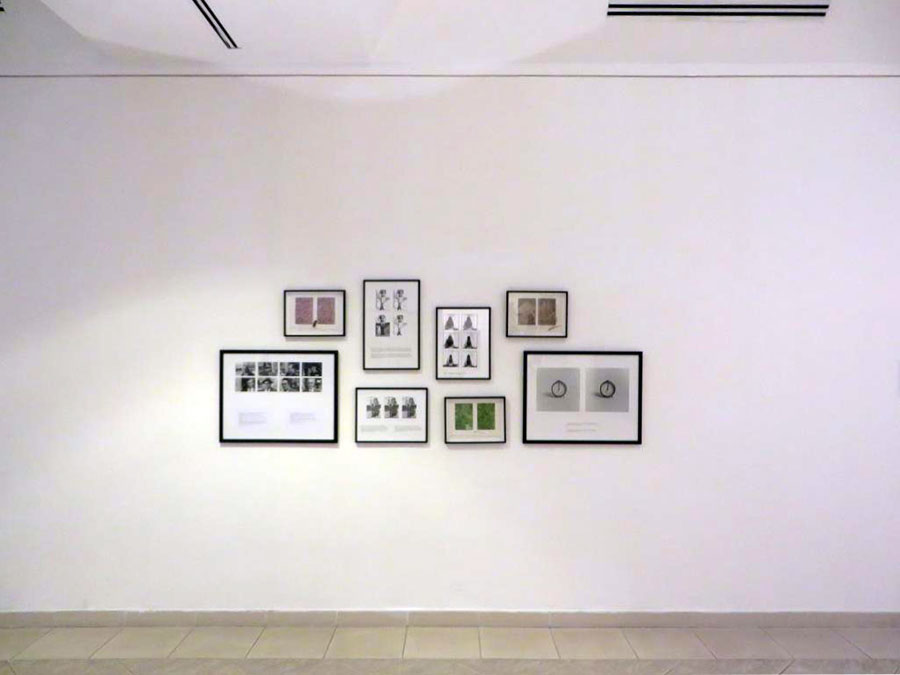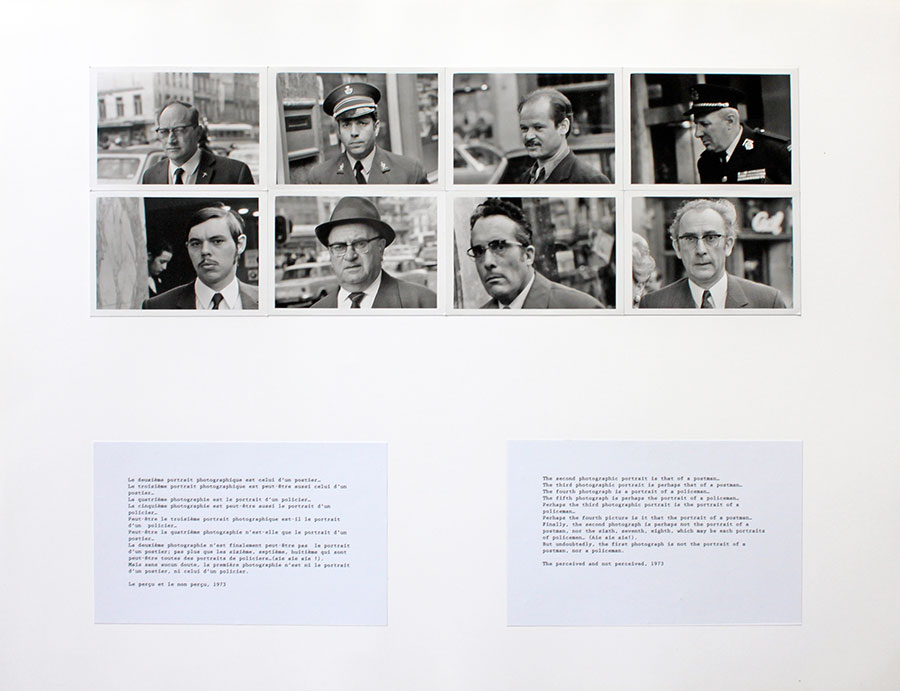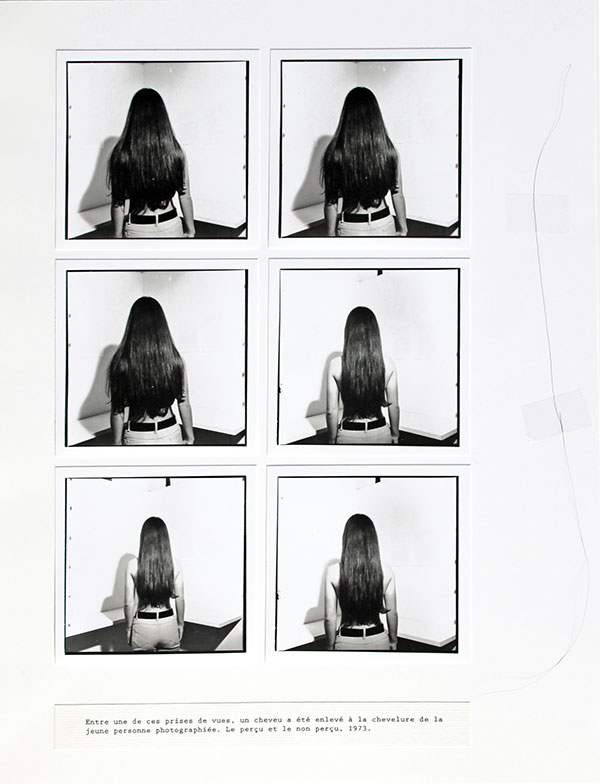Jacques Lizène, Le Perçu et le non perçu
[…] Lizène used the medium of photography to supply either a commentary on, or subversion of, traditional genres such as portraiture, still life, or street photography. He realized this through the notion of the mediocre, an approach that is in line with contemporary photo conceptual art as analyzed by Jeff Wall in his classic essay, ‘Marks of Indifference: Aspects of Photography in, or as, Conceptual Art ‘ (1995). Lizène, however, went further than his contemporaries. Not only is his work- certainly his photographic work- characterized by a certain ‘deskilling’ and ‘visual banality,’ to use Wall’s terms, he also identified him self as the ultimate mediocre artist. In 1970 he defined him self as the ‘Minor, late mid -twentieth-century Master of Liege, Artist of the Mediocre and Unimportant‘. In essence, Lizène used mediocrity as a means to claim the artistic value of an object or an idea that is not typically considered as praiseworthy. With this strategy of mediocrity – a deliberate refusal to make ‘high art’ – Lizène, in fact, continued the Surrealist methodology that had been most ‘purely’ adopted by Marcel Mariën.
In 1972 and 1973 Jacques Lizène created a series of photographic works entitled the Perceived and the Not-Perceived [Le Perçu et le Non Perçu] in which the photographic mechanism is shown, analyzed, and questioned in a light, humorous way. The series starts with a selfportrait entitled the Minor Master from Liege Pressing his Nose against the Surface of the Photograph. In ‘The Quick and Incomplete Autobiography, by Lizène Himself’ (1990) the artist asserted that ‘the surface of the photo was actually a window’ and thus, he qualified the image as ‘a mediocre joke ‘ This silly statement, nevertheless, makes the viewer conscious of the camera lens as a screen that separates the photograph from reality. Lizène’s remark also reminds the viewer of the fact that what is shown is not reality but an (indexical) image of reality.
Most of the other works that are part of the series the Perceived and the Not Perceived were based upon the idea of reproducibility, a fundamental characteristic of the photographic medium. In each work a series of photographs – with exactly or nearly the same images -is combined with a caption suggesting that the images differ but in a way that is ‘unperceivable.’ One of the works included in the series is: In the second photo the black sock worn on the subjects right foot is worn on the subjects left foot in the first photo, whereas in the third photo the subject wears two completely different socks.
In this series the photographs alone cannot make the meaning of the artwork clear; words are required, therefore, in order to communicate the content that the artist intended. The combination of a series of images and a text in the form of a caption is a strategy that is often used within the discourse of Conceptual art. Take, for example, John Baldessari’s The Back of All the Trucks Passed While Driving from Los Angeles to Santa Barbara, California, Sunday 20 January 1963, which consists of picture s of, indeed, the back of trucks. The caption of this work (drily) describes what is seen in the pictures. By contrast, Lizène’s works that form the series The Perceived and the Not-Perceived challenge the relation between what is read and what is seen. This approach recalls the subverted image-text relation found in the work of Rene Magritte, such as The Treachery of Images [La Trahison des Images] (1929). In addition, Lizène affirmed in an interview his appreciation for Magritte and especially ‘his particularly modern way of interrogating the image’. […] As a matter of fact, Lizène remarked ‘ [that] on August 28, 1990, he realized he was one of the inventors of the « comic conceptualism » of the early 1970s.’
Liesbeth Decan, Conceptual Art and Surrealism: an Exceptional, Belgian Liaison in
Mieke Beyen (dir), Minor Photography. Connecting Deleuze and Guattari to Photography Theory, Lieven Gevaert Series, Leuven University Press, 2014.
Jacques Lizène
Le deuxième portrait photographique est celui d’un postier…
Le troisième portrait photographique est peut-être aussi celui d’un postier… La quatrième photographie est le portrait d’un policier… La cinquième photographie est peut-être aussi le portrait d’un policier… Peut-être le troisième photographique est-il aussi le portrait d’un policier… Peut-être la quatrième photographie n’est-elle que le portrait d’un postier…
La deuxième photographie n’est finalement peut-être pas le portrait d’un postier ; pas plus que les sixième, septième, huitième qui sont peut-être toutes des portraits de policiers (aie aie aie !).Sans aucun doute, la première photographie n’est ni le portrait d’un postier, ni celui d’un policier. Le perçu non perçu, 1973, 8 photographie N.B, tirage argentique, texte imprimé, 65 x 50 cm. 1973 – 2011
Jacques Lizène
Entre une de ces prises de vues, un cheveu a été enlevé à la chevelure de la jeune personne photographiée. Le perçu et le non perçu, 1973. Le perçu et le non perçu, 1973, 6 photographie N.B, tirages argentiques, texte imprimé, cheveu. 40 x 30 cm. 1973-2011.
[sociallinkz]


